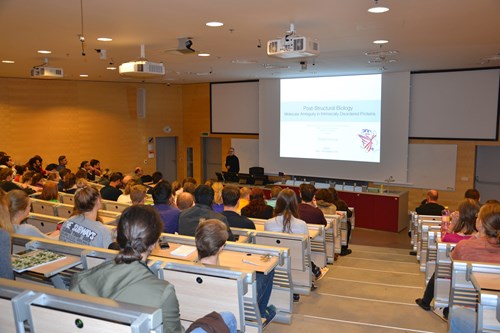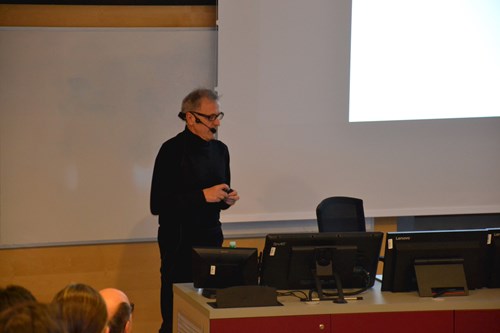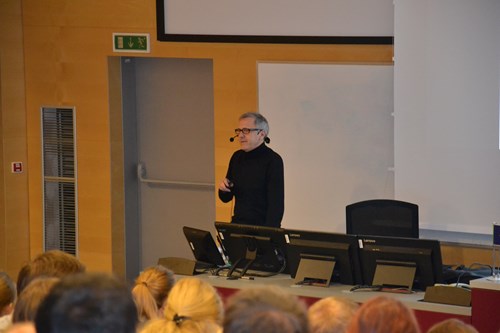About the lecture
Intrinsically disordered proteins (IDPs) are challenging the established structural biology structure-function paradigm and thus mandate suitable theoretical framework and concepts to properly address the subtle interdependence between protein structure and dynamics. They fulfill essential tasks in eukaryotic life despite a lack of well-defined structure. In particular, it is their structural flexibility that allows them to adapt to and to interact with different binding partners, making IDPs suited for functioning as hubs between several interaction partners. In contrast to stably folded globular proteins IDPs sample larger conformational spaces comprising loosely folded as well as compact conformational substrates. This significant reduction of conformational space, however, results from the existence of pre-defined basic structural motifs that are combined in a combinatorial (pseudo)-repetitive fashion to build larger protein structures.
In order to adequately grasp the subtleties of state distributions of IDPs appropriate theoretical and experimental techniques are needed. Nuclear magnetic resonance (NMR) has matured to a powerful experimental method for the characterization of IDPs and their complexes in solution. In combination with novel computational protein sequence analysis tools it can be used to provide a more comprehensive view of IDPs and how they can simultaneously maintain modularity, robustness, adaptability, capacity to engage in weak regulatory linkages and exploratory behaviour, which are essential features for the generation of structural and phenotypic variation in biological systems.





